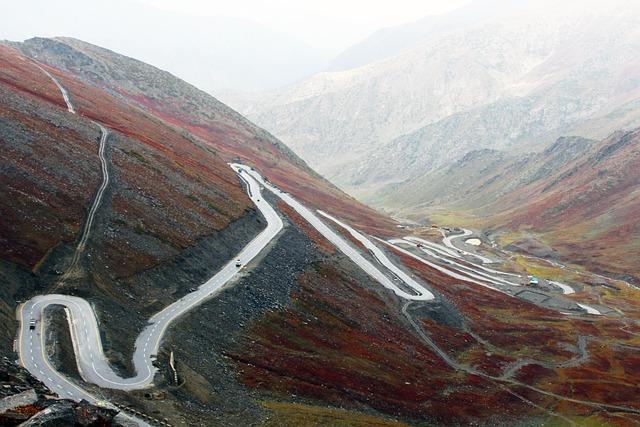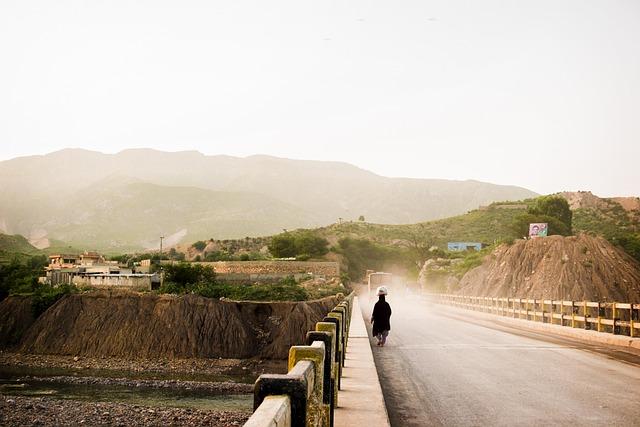Title: Exploring Pakistan’s Immigration Landscape: Challenges and Changes
Introduction:
In the heart of South Asia lies Pakistan, a nation often painted with the broad strokes of culture, history, and resilience. Yet, beneath the vibrant tapestry of its heritage, there echoes a complex narrative of immigration—an evolving landscape marked by both challenges and aspirations. As the world shifts and global borders continue to blur, Pakistan finds itself at a crossroads, grappling with a rich influx of diverse populations while wrestling with unique hurdles and opportunities. This article delves into the intricate facets of Pakistan’s immigration ecosystem: from the socio-economic factors driving migration to the policies meant to steer its course. Together, let us navigate through this dynamic journey, unveiling the stories that shape the lives of those who venture into, out of, and within this ever-evolving nation.
Understanding the Historical Context of Immigration in Pakistan
Throughout its history, Pakistan has served as both a destination and a transit point for various waves of migrants. The partition of British India in 1947 led to a significant population exchange, resulting in millions of Muslims migrating to Pakistan while Hindus and Sikhs relocated to India. This seismic shift not only shaped the demographics of the young nation but also laid the groundwork for complex social dynamics. The influx of refugees from Afghanistan during the Soviet invasion in the 1980s further complicated the landscape, as Pakistan became home to one of the largest refugee populations in the world. These historical migrations have created a rich tapestry of cultural influences yet also resulted in tension over resources and integration.
Immigration policies in Pakistan have been shaped by both domestic and international pressures, often reflecting the changing political landscape. Over the decades, the country has implemented various measures in response to challenges such as economic instability, terrorism, and regional conflicts. Key issues include:
- Refugee Policies: Management of Afghan refugees has been a contentious topic, with policies evolving amid shifting geopolitical realities.
- Labor Migration: Economic factors have prompted a considerable labor migration, particularly to the Gulf countries, impacting remittances and family structures.
- Identity and Nationalism: The interplay between immigration and national identity continues to be debated, particularly in the context of ethnic diversity.

Identifying Challenges Faced by Immigrants in Modern Pakistan
The journey of immigrants in Pakistan is often fraught with numerous challenges that impede their integration and well-being. Many newcomers grapple with language barriers, which can hinder their ability to communicate effectively and gain employment. Additionally, societal attitudes can create an unwelcoming environment, with discrimination based on ethnicity or nationality acting as a significant barrier to accessing essential services. Economic hardships are also prevalent, as many immigrants face obstacles in securing jobs that match their skills and qualifications, leading to increased poverty and vulnerability.
Furthermore, navigating the legal framework in Pakistan can be daunting for immigrants, often leaving them in precarious situations without protection. Issues related to documentation and the fear of deportation can inhibit their ability to fully participate in society. Despite these hurdles, many immigrants exhibit remarkable resilience, often establishing vibrant communities that contribute to the socio-economic fabric of the country. Addressing these challenges requires a collective effort to foster inclusion and support systems that empower immigrants, enabling them to thrive in their new homeland.

Examining Policy Changes and Their Impact on Immigration Dynamics
The landscape of immigration in Pakistan has witnessed notable transformations, primarily driven by recent policy shifts. Changes in visa regulations, stricter border controls, and shifting diplomatic relationships have all contributed to a redefined immigration dynamic. For instance, policies aimed at tightening immigration for labor migrants have been implemented alongside incentives for skilled workers, creating a complex environment where opportunities and challenges coexist. This dual focus appears to reflect Pakistan’s broader economic ambitions while also addressing national security concerns.
Furthermore, the impact of regional conflicts and international agreements cannot be overlooked. Emerging trends now shape the demographic fabric of migration, as those fleeing instability in neighboring countries seek refuge in Pakistan. Recent agreements with international organizations have aimed at improving the integration and support mechanisms for these migrants, highlighting an evolving approach towards humanitarian responsibilities. The current policies not only shape the immediate immigration landscape but also pose long-term implications for socio-economic integration and cultural exchange.

Fostering Inclusive Practices: Recommendations for a Sustainable Future
To cultivate a more inclusive environment within the framework of Pakistan’s evolving immigration landscape, adopting a multifaceted approach becomes essential. This approach should prioritize collaboration among various stakeholders, including government bodies, NGOs, and local communities. By doing so, we can create a comprehensive support system that emphasizes the needs and contributions of all immigrants. Key strategies to consider include:
- Community Engagement: Encourage local communities to participate in dialogues about immigration policies and the integration of newcomers.
- Educational Programs: Implement training sessions to inform citizens about the cultural and economic benefits of immigration.
- Policy Advocacy: Promote inclusive immigration policies that address the rights and needs of diverse populations.
Moreover, it’s crucial to establish clear metrics for assessing the impact of these inclusive practices. Utilizing a data-driven approach can illuminate success stories and areas requiring improvement. Consider creating localized support networks that facilitate access to resources for immigrants, including legal assistance and employment services. A visual representation of available resources, represented in a table, can enhance understanding and accessibility:
| Resource Type | Description | Contact Information |
|---|---|---|
| Legal Aid | Free legal consultations for immigration matters. | (123) 456-7890 |
| Job Placement | Assistance in finding employment opportunities. | (987) 654-3210 |
| Cultural Workshops | Programs aimed at fostering cultural exchange and understanding. | (555) 123-4567 |
Key Takeaways
As we draw the curtain on this exploration of Pakistan’s immigration landscape, it becomes clear that the story is far from simple. Among the challenges faced—ranging from bureaucratic hurdles to socio-economic pressures—there lies a tapestry of change interwoven with hope and resilience. The narratives of immigrants, both recent arrivals and long-established communities, paint a vivid picture of a nation in flux, continually shaped by the diverse experiences of its people.
Understanding this dynamic landscape requires acknowledging the complexities of the past while envisioning the possibilities of the future. As Pakistan navigates its own evolving identity in a globalized world, the discourse surrounding immigration will undoubtedly play a pivotal role in shaping policies, perceptions, and, ultimately, the collective fate of its inhabitants.
the true essence of Pakistan’s immigration narrative lies not just in statistics or policy debates, but in the shared human experiences that connect us all. Whether it’s through the lens of a family’s journey or the ambition of an entrepreneur seeking new opportunities, these stories remind us that at the heart of every challenge lies the potential for transformative change. As we look forward, the hope remains that Pakistan will continue to embrace its multifaceted identity, paving the way for an inclusive future enriched by the diverse contributions of all its citizens.



